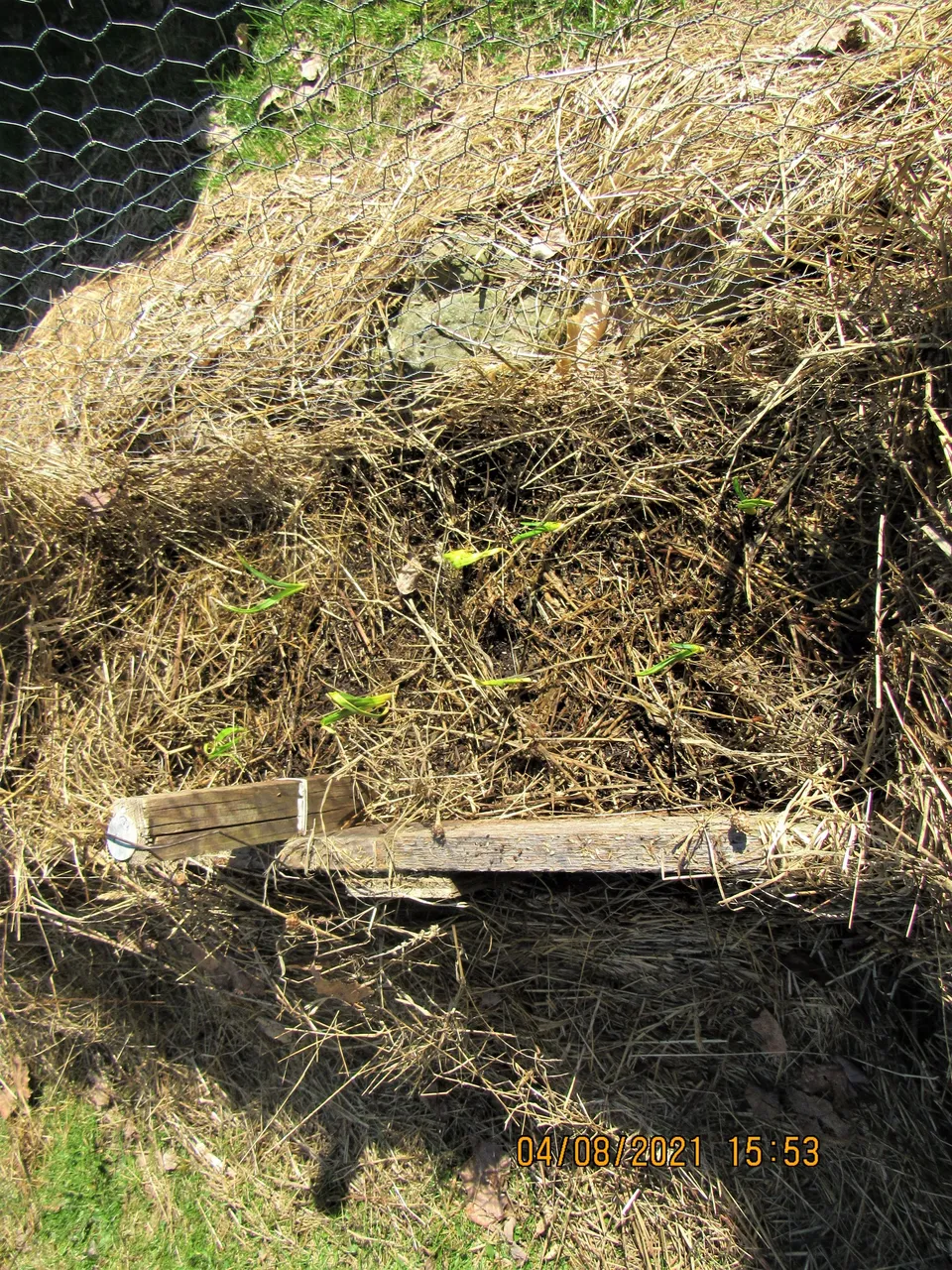Changing the location of your vegetable plants in your garden, from year to year, does take some planning, but the return is well worth the effort.
There're multiple reasons for rotating your crops.
First of all, you will be reducing the chance that insect pests will get a foothold in the garden.
When you rotate the crops, the bugs don’t know where to look for food and die out.
2nd, the chance of diseases also diminishes. Soil-borne diseases can kill your crops quickly and without much warning. Certain diseases only feed on certain types of plants. If you move the crop, the pest or disease has no host on which to live.
Moving a crop from one location to a new one the following year will also improve your soil's fertility and the availability of nutrients for your plants. If you keep planting the same crops in the same place, year after year, the crop is going to utilize whatever key nutrients the plant desires. This will not allow your soil to be balanced as the nutrients it uses will be leached from the soil.
Before you do anything, you need to make a list of what vegetables you’ll be growing in your garden.
Learning which vegetables belong to what family is the very first step to being able to keep your garden soil pumping out produce every year.
There are six basic vegetable families,
- Alliums: The veggies included in this family are onions, shallots, leeks, and garlic.
- Legumes: Green beans, green peas, soybeans. There're many other plants found in this family. All legumes are soil fixers, which benefit the soil by adding nitrogen back to the soil.
Brassicas: Broccoli, cauliflower, cabbage, kale, brussels sprouts, turnip greens, radishes, and collards.
These vegetables need nitrogen-rich soil and should be planted in a bed where legumes were planted the year before. - Nightshades: Tomatoes, eggplant, peppers, and potatoes.
All of these vegetables are heavy feeders and need rich soil.
They are also affected by the same diseases. - Umbellifers: Carrots, parsnips, fennel, parsley, and dill.
- Cucurbits: Zucchini and summer squash, cukes, pumpkins and winter squash, melons, and gourds.
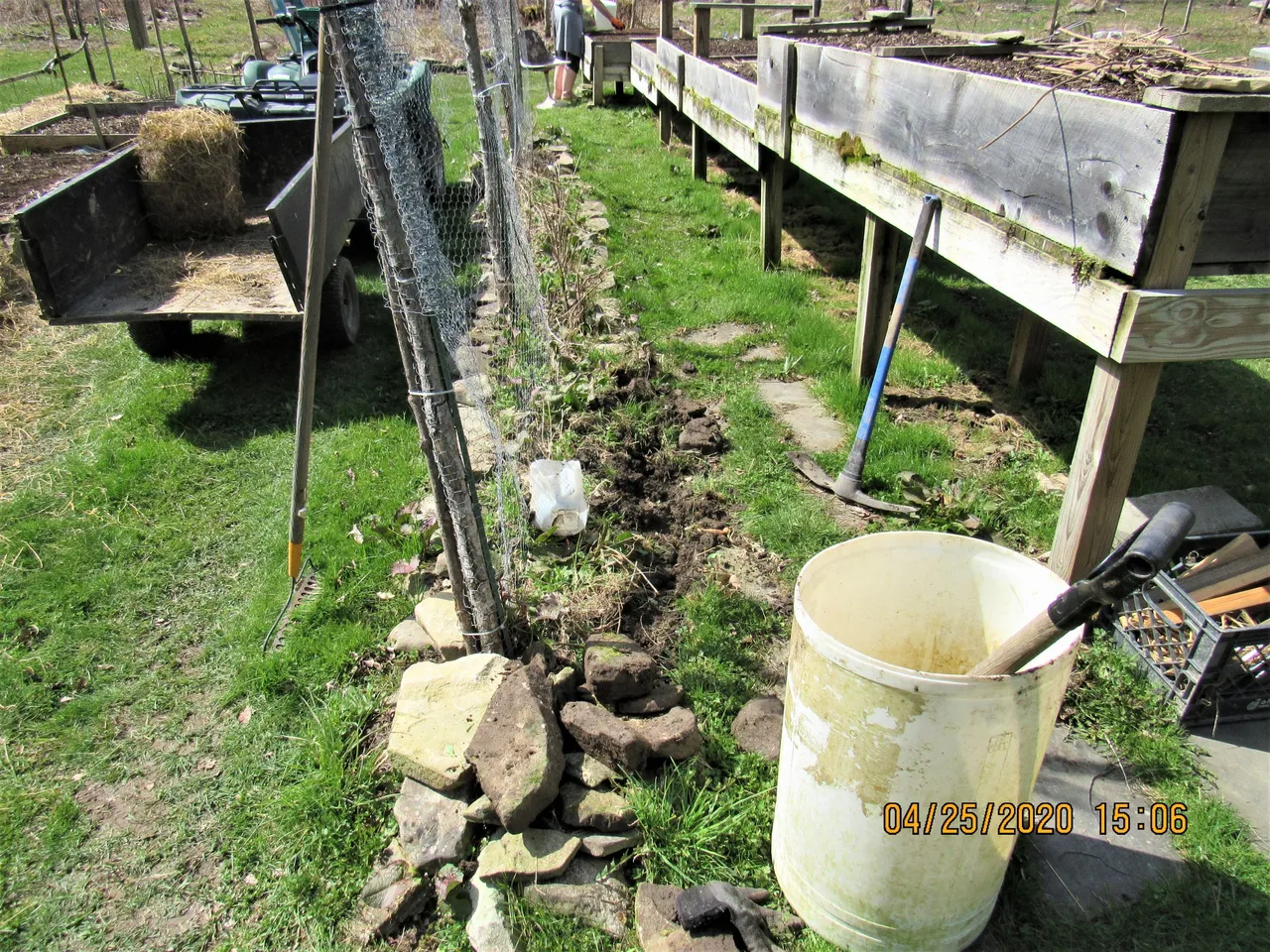
Last year we decided to upgrade this part of our garden. We grew peas here and it was apparent that the soil needed to be amended. It was also necessary to build a better barrier to keep out the rabbits.

After turning the bed, a 12" wooden fence was constructed.
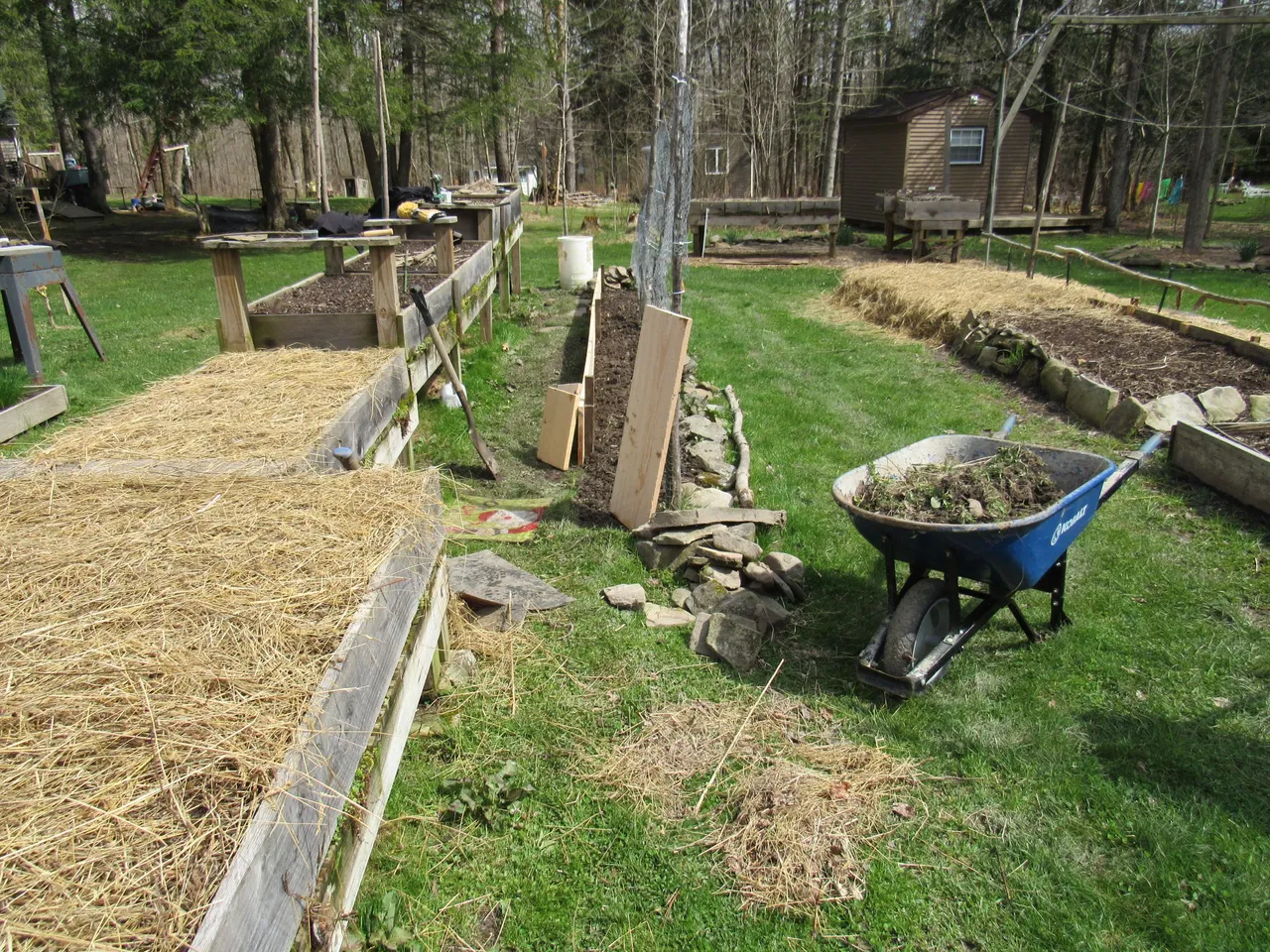
With a 12" high wall around the bed, there was plenty of space to add additional organic matter to the vegetable garden.
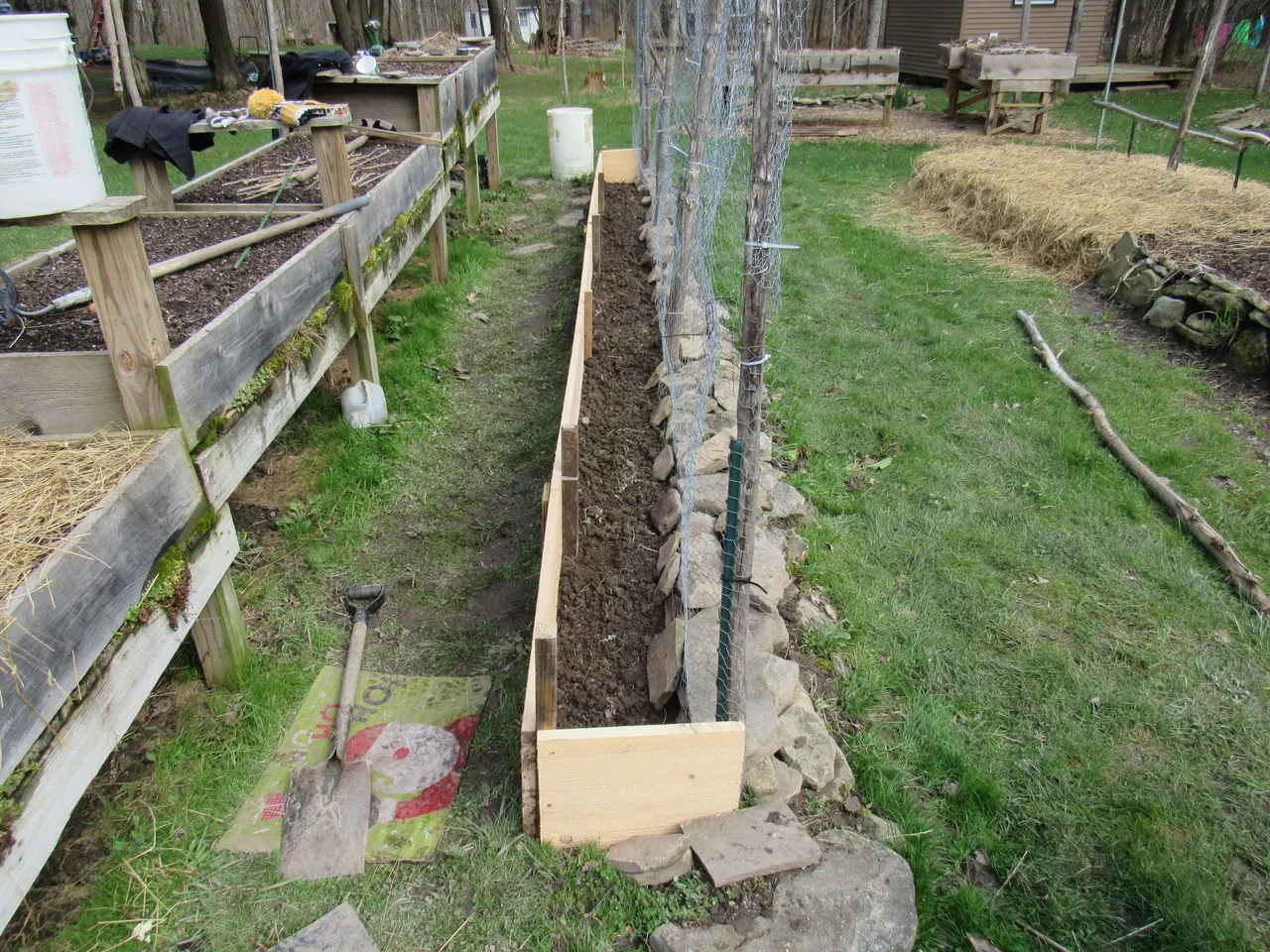
Generous amounts of last year's collection of decaying leaves would compliment the dirt in this bed.
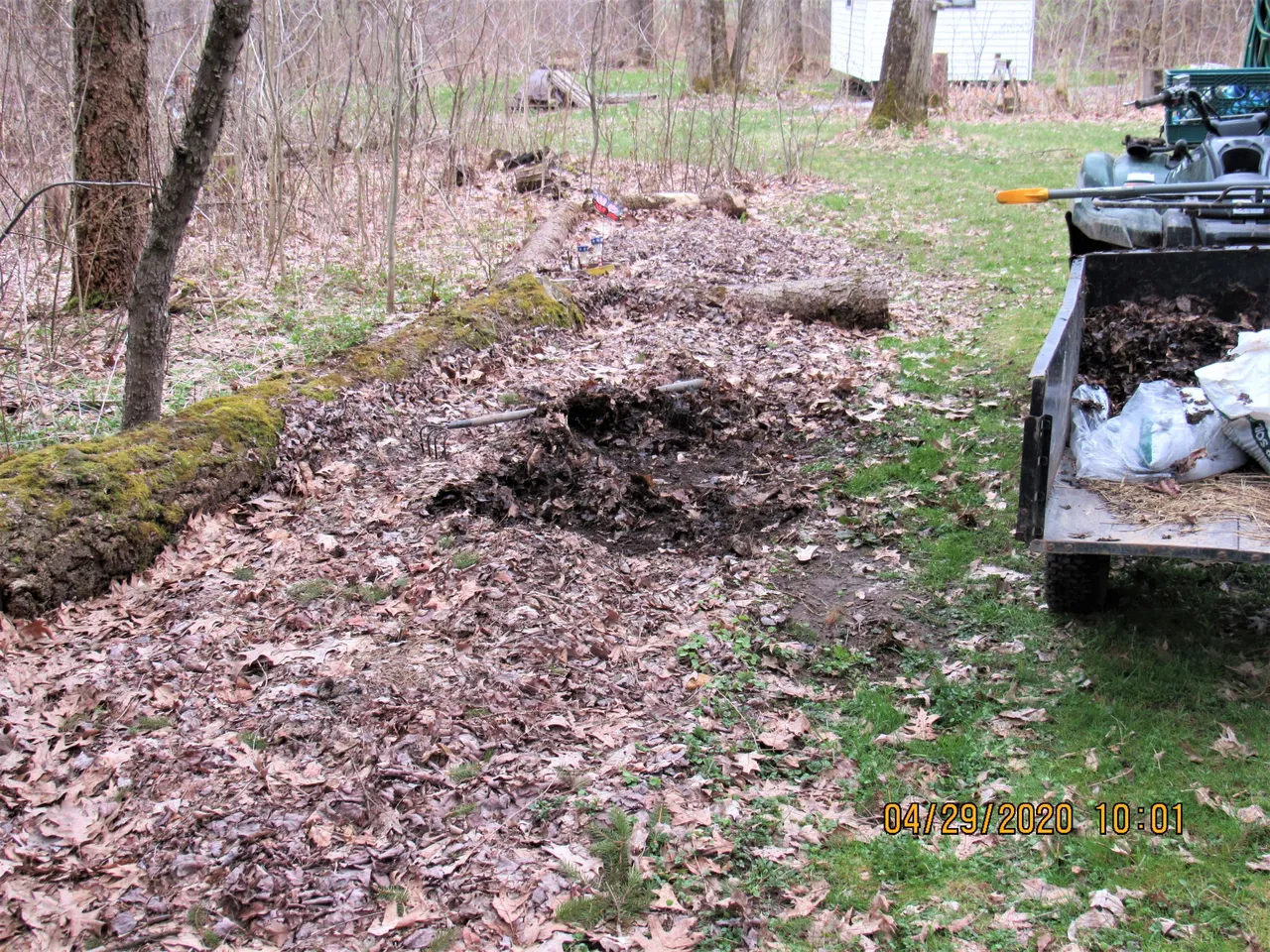
You can see that decaying leaves, peat moss, organic vegetable bedding, and compost were added to the soil in this picture. In addition to the 6" of soil that was already in the bed, another 6" of organic matter was added.
Amending the soil in this fashion would allow us to rotate in crops that would not have been able to flourish otherwise.
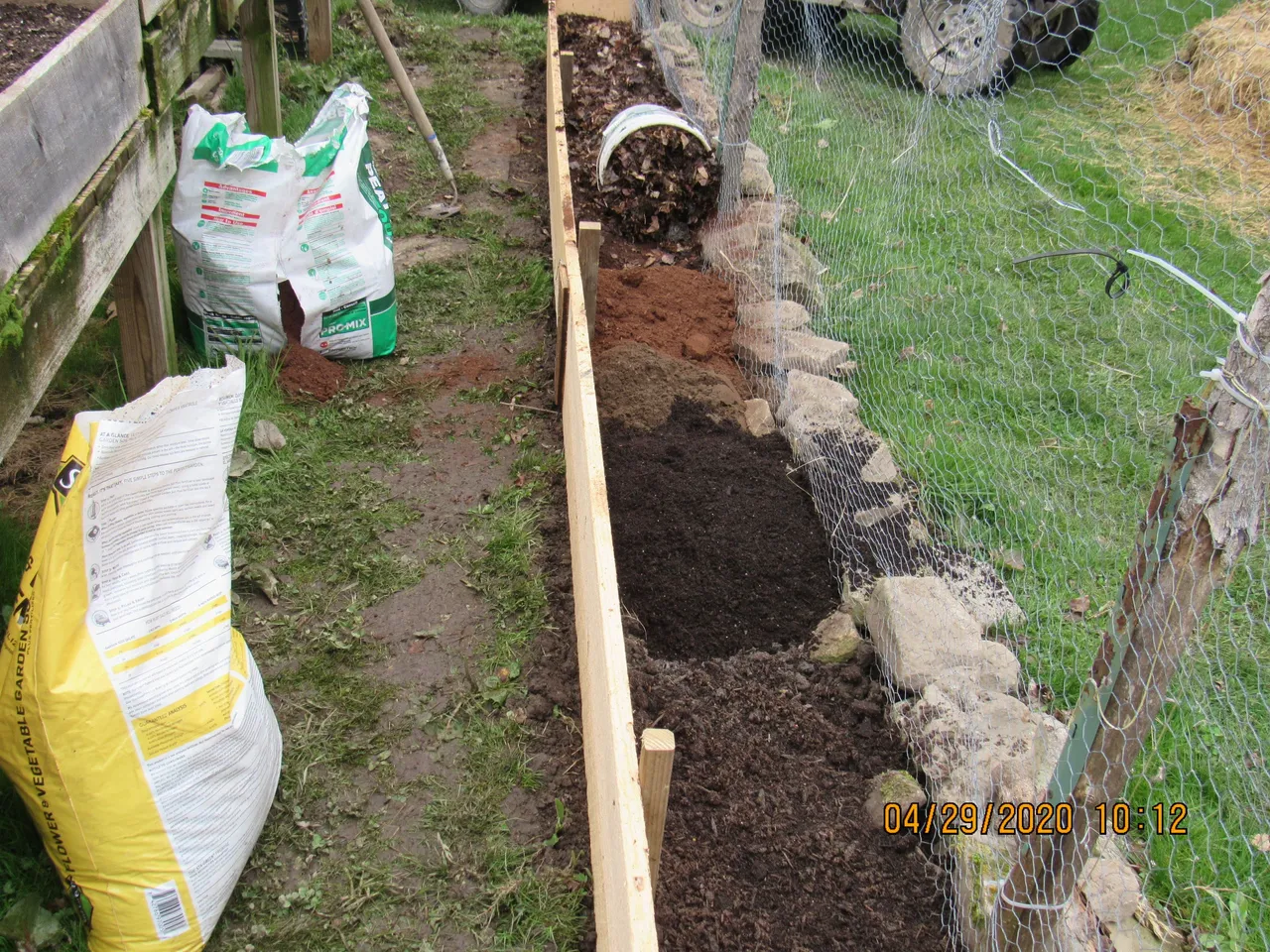
With the bed completed, it was finally time to plant the peas.
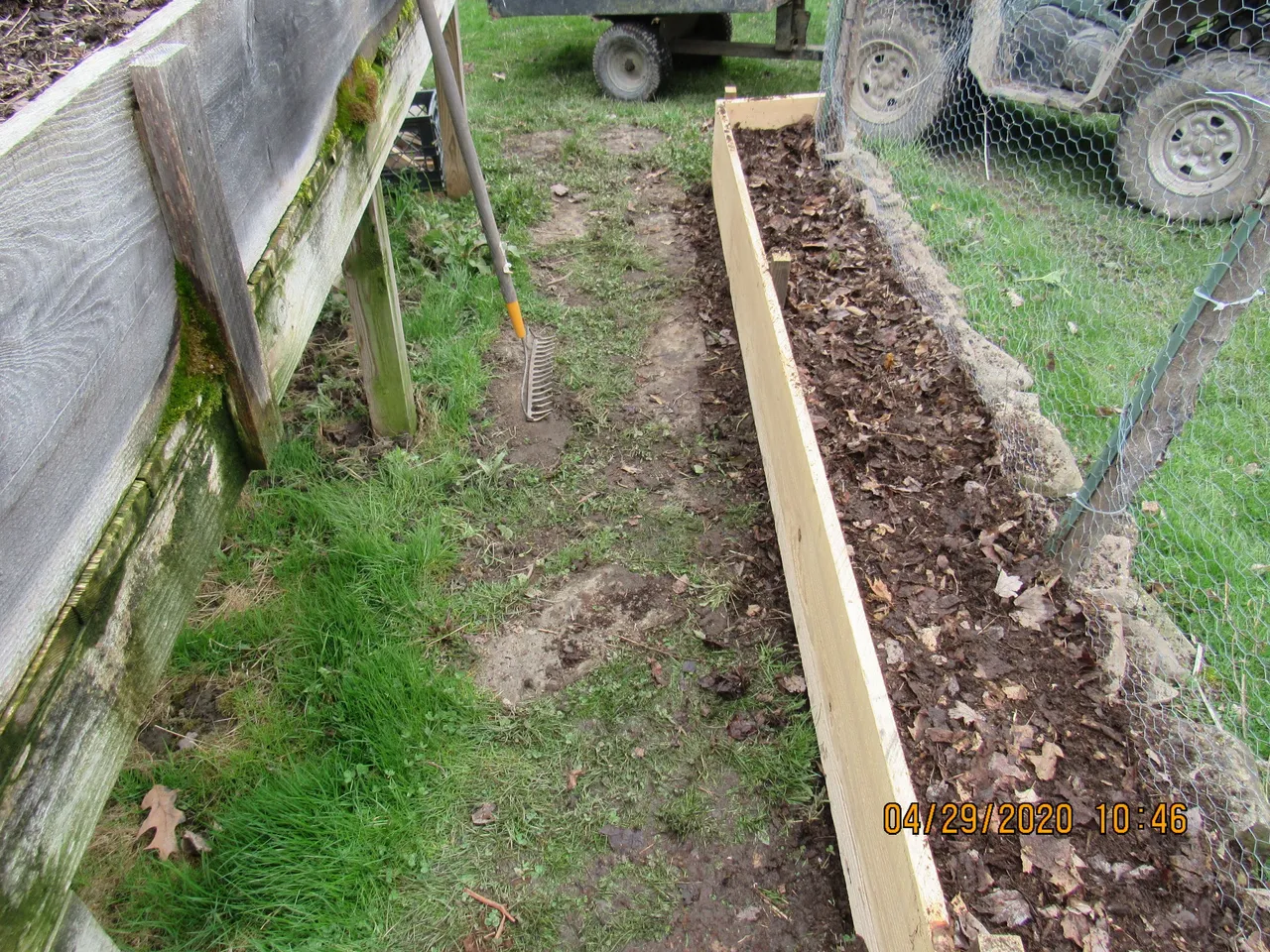
As all gardeners know, bending over is part of the game. Over the years, knowing that age has no mercy, we have come up with ways to eliminate some of the bending over.
Making the holes in the dirt, for the hundreds of pea seeds, requires no bending over with the end of a broom.
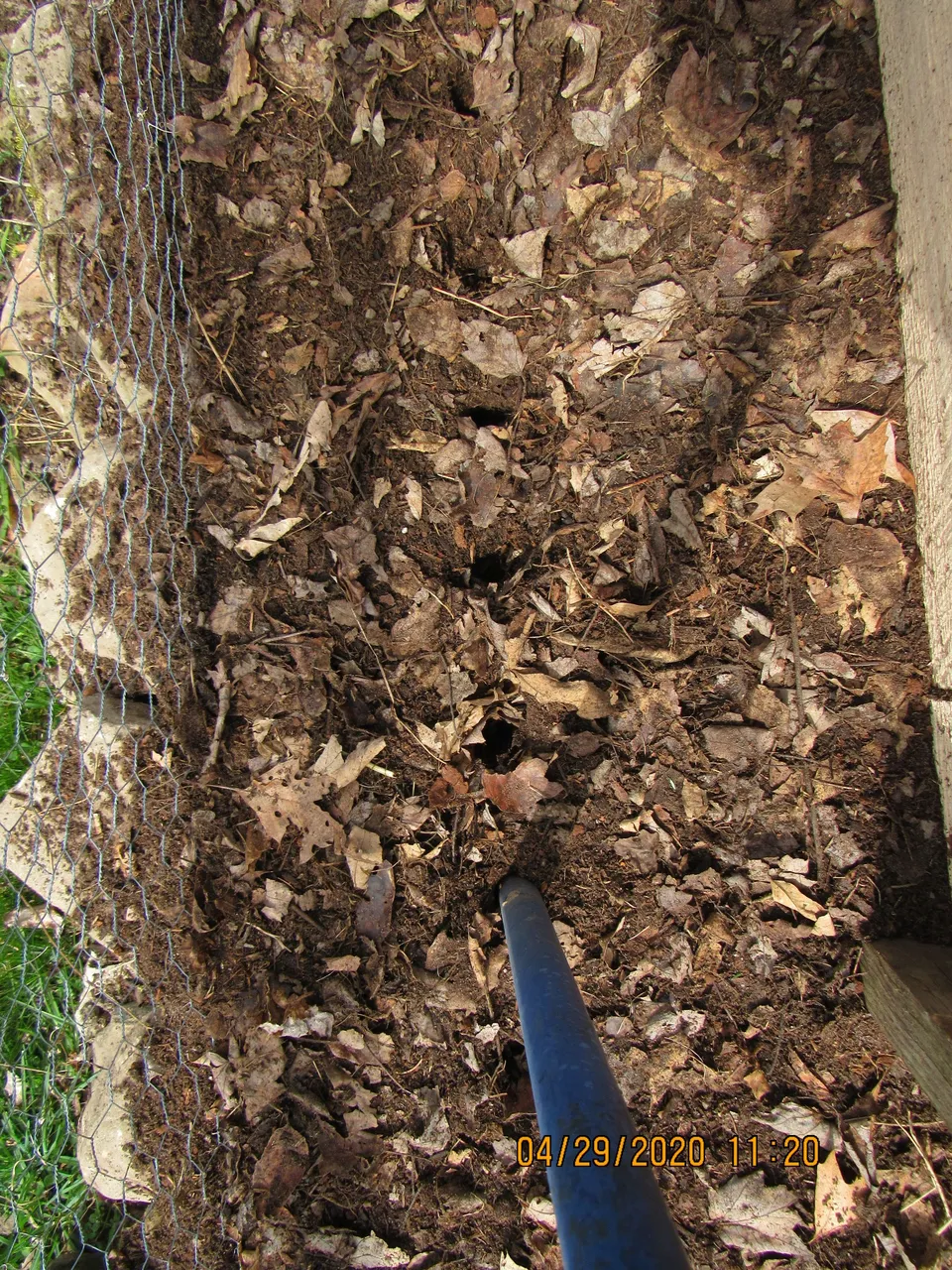
Six weeks later it was obvious that the peas were enjoying the upgrades made to their new home.
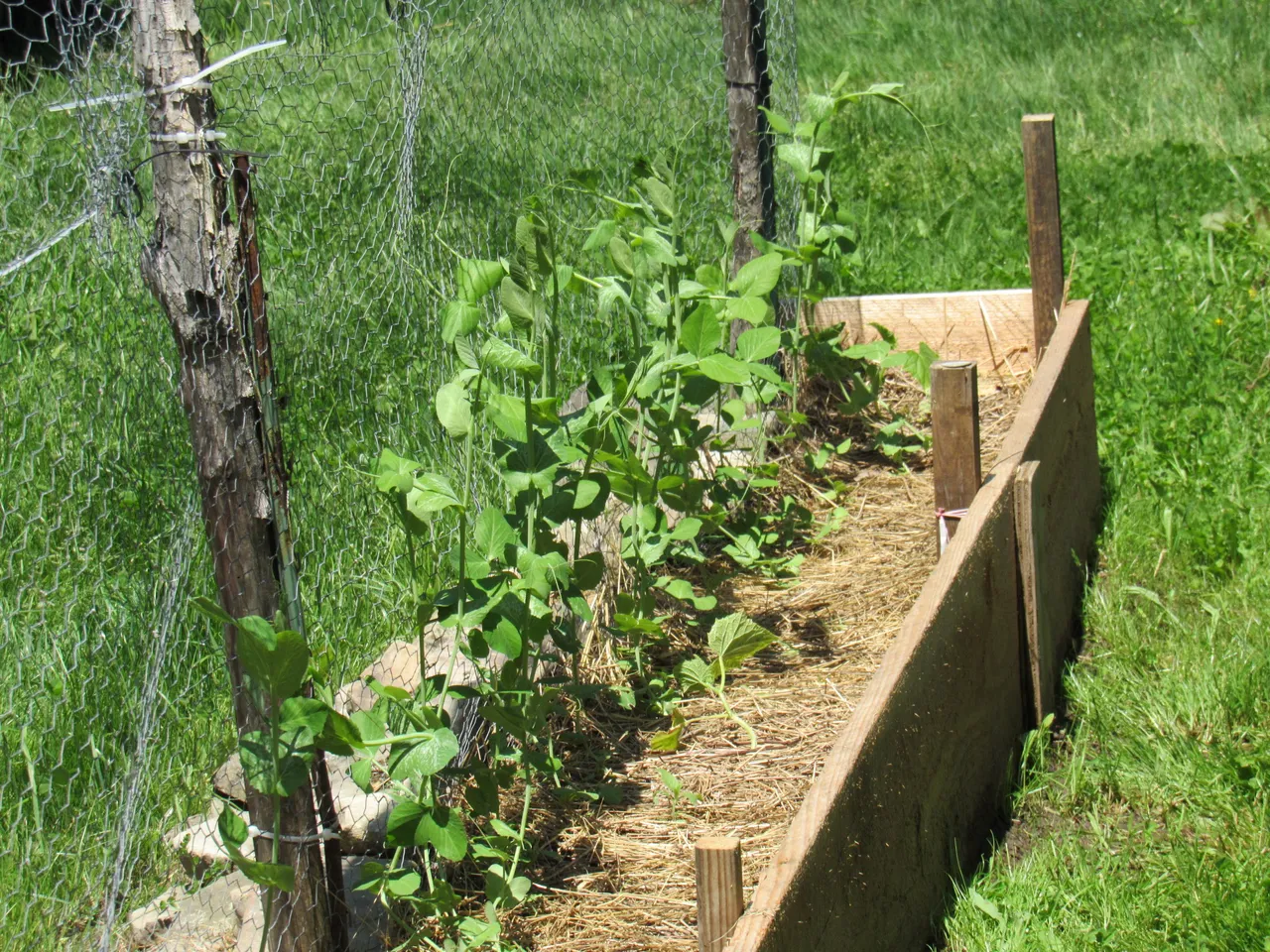
This is a picture of the garlic bed from last year.
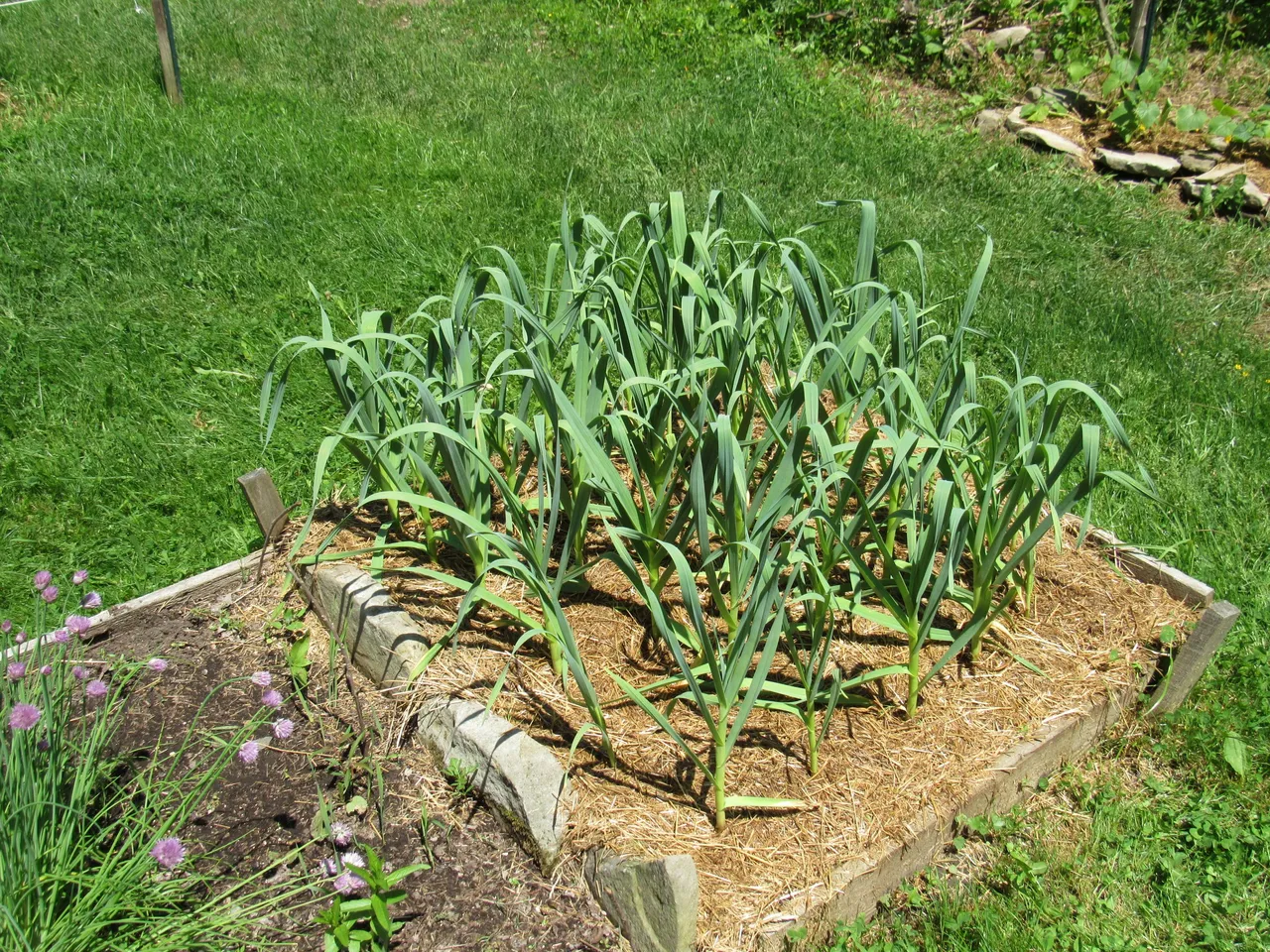
Since @farm-mom and I try to grow enough produce that will take us from one year to the next, we figured this past year's crop of hard neck garlic would be sufficient.

Well, that plan didn't play out too well. For the first time, last year we tried our hand at making Garlic Dill Pickles. They came out great, but you can go through some garlic making these bad boys. Before we knew it we had used almost half of our stash of garlic and realized that this year we would need to grow twice as much.
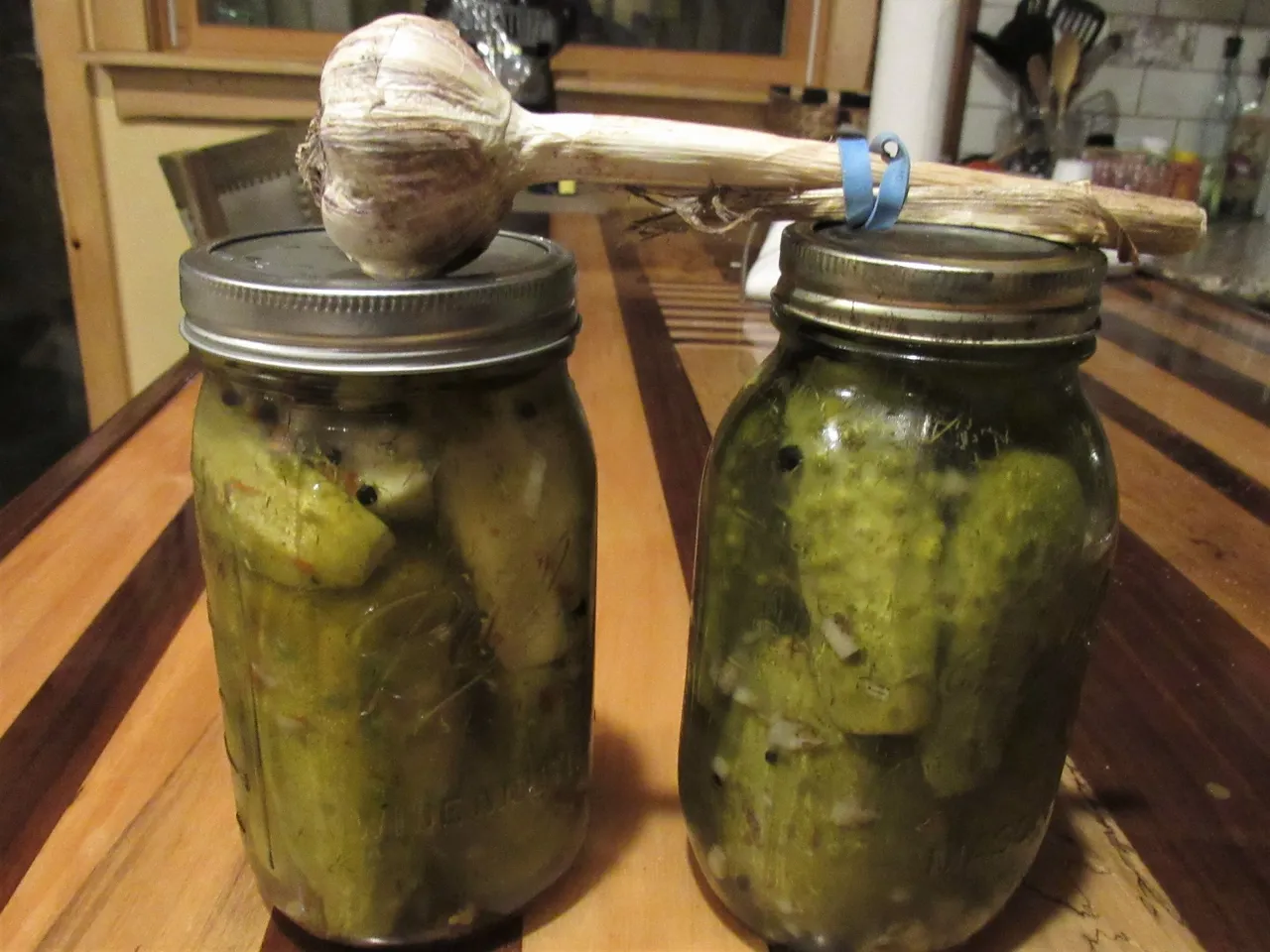
The California Late White Garlic is a softneck garlic that is a prolific grower. This is the type of garlic you will most often see in stores.
The Inchelium Red Garlic is also softneck garlic. When mature, it will produce about 15 cloves, with no small ones in the middle.
The beauty of softneck garlic is that it can be stored for a long time.
Siberian Garlic is a hardneck garlic. This is the only type of garlic we have grown in the past. Hardneck garlic doesn't store as well as softneck garlic and for that reason, we added the other two types of garlic to our garden.
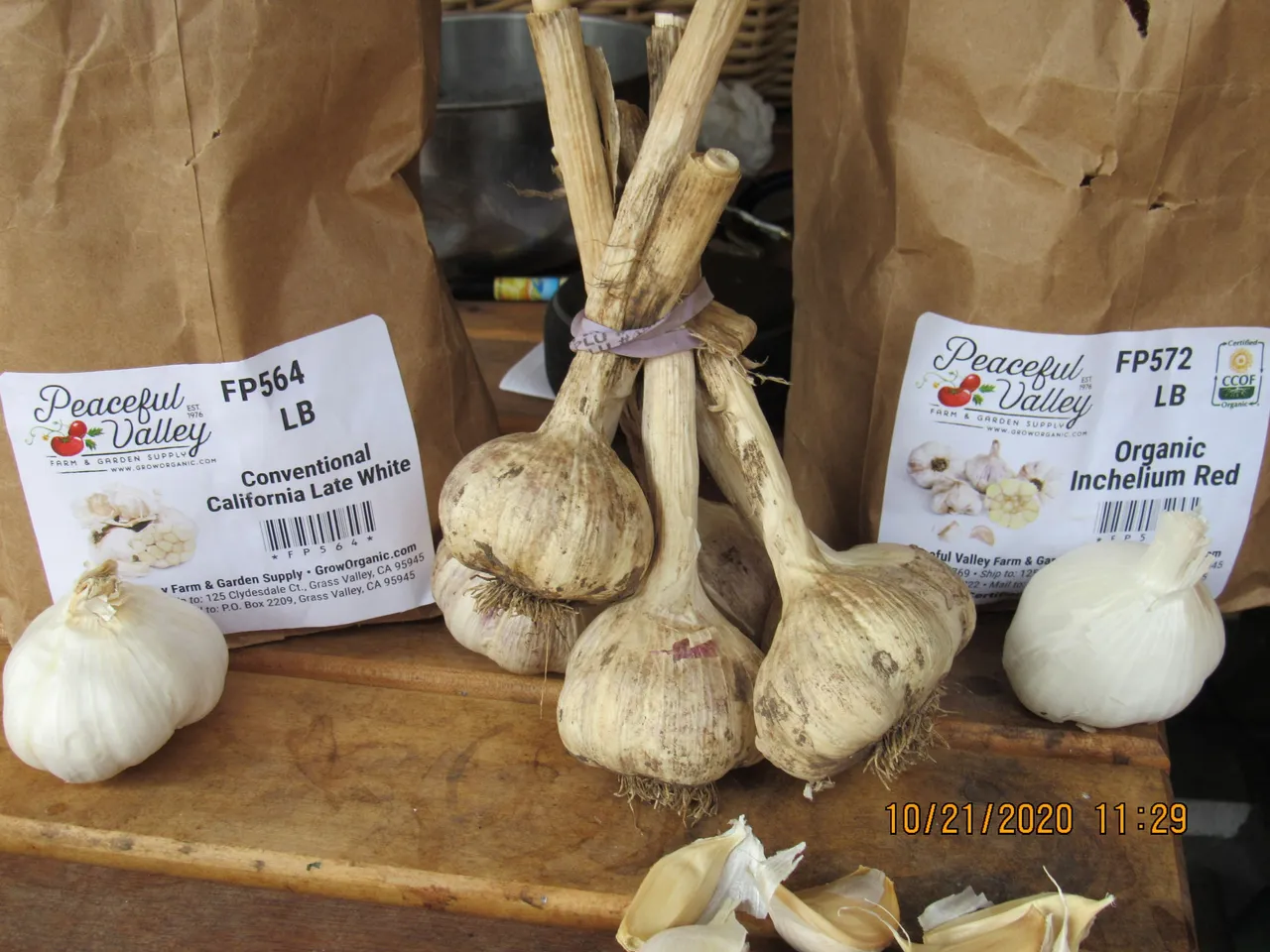
With the peas long gone, we knew that growing them again in this vegetable bed would not be wise. It was time to rotate in a new crop. Since peas are in the Legumes family and are soil fixers, rotating in garlic, which is in the Alliums family, would work out great.
That blue broom handle sure comes in handy. By making a mark 4 inches from the bottom of the handle, every hole will finish at the same depth.
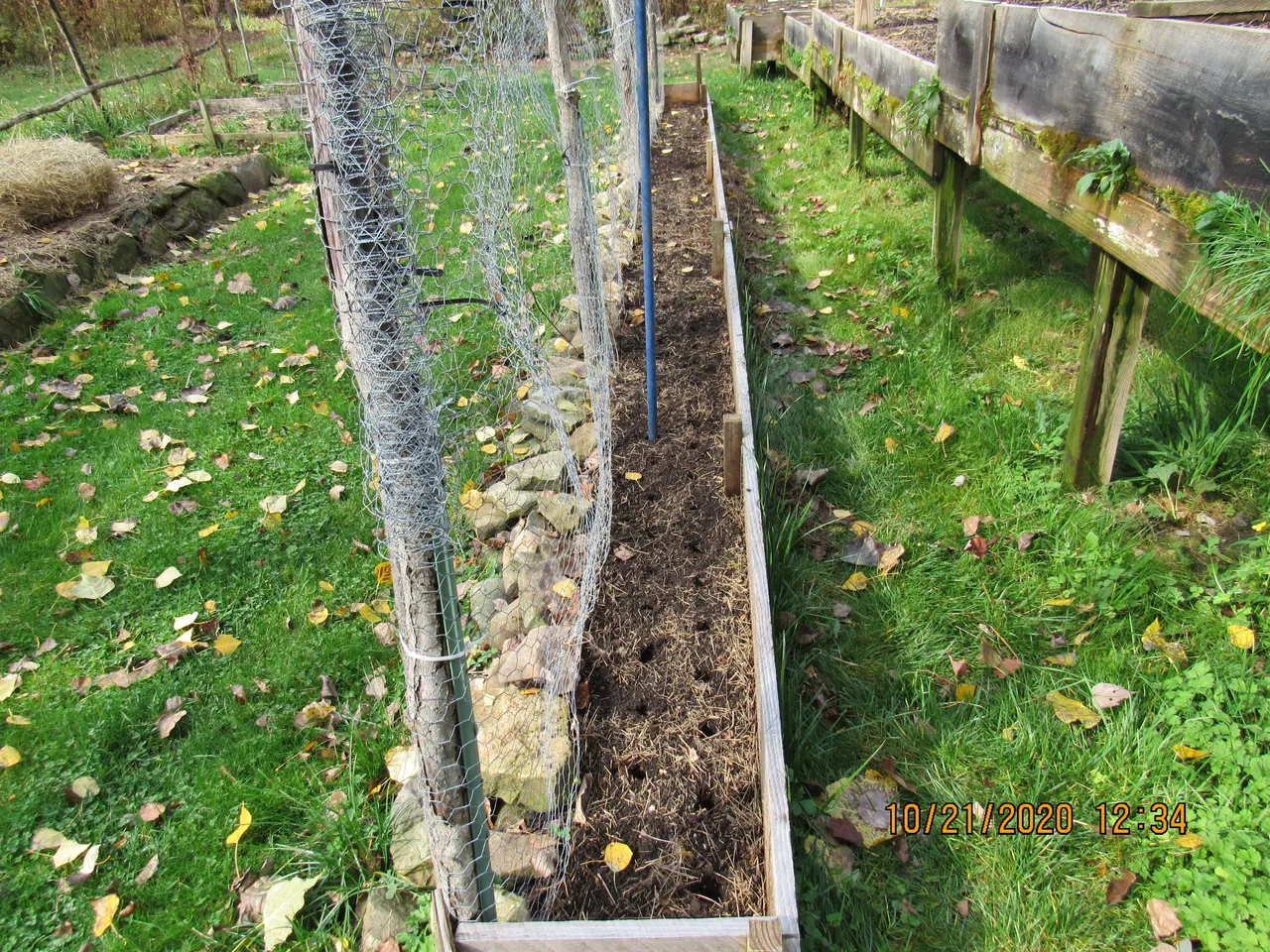
Tamping down the newly planted bet is probably not necessary, but I like knowing that the garlic cloves are tucked away, secure in their bed for the long winter.
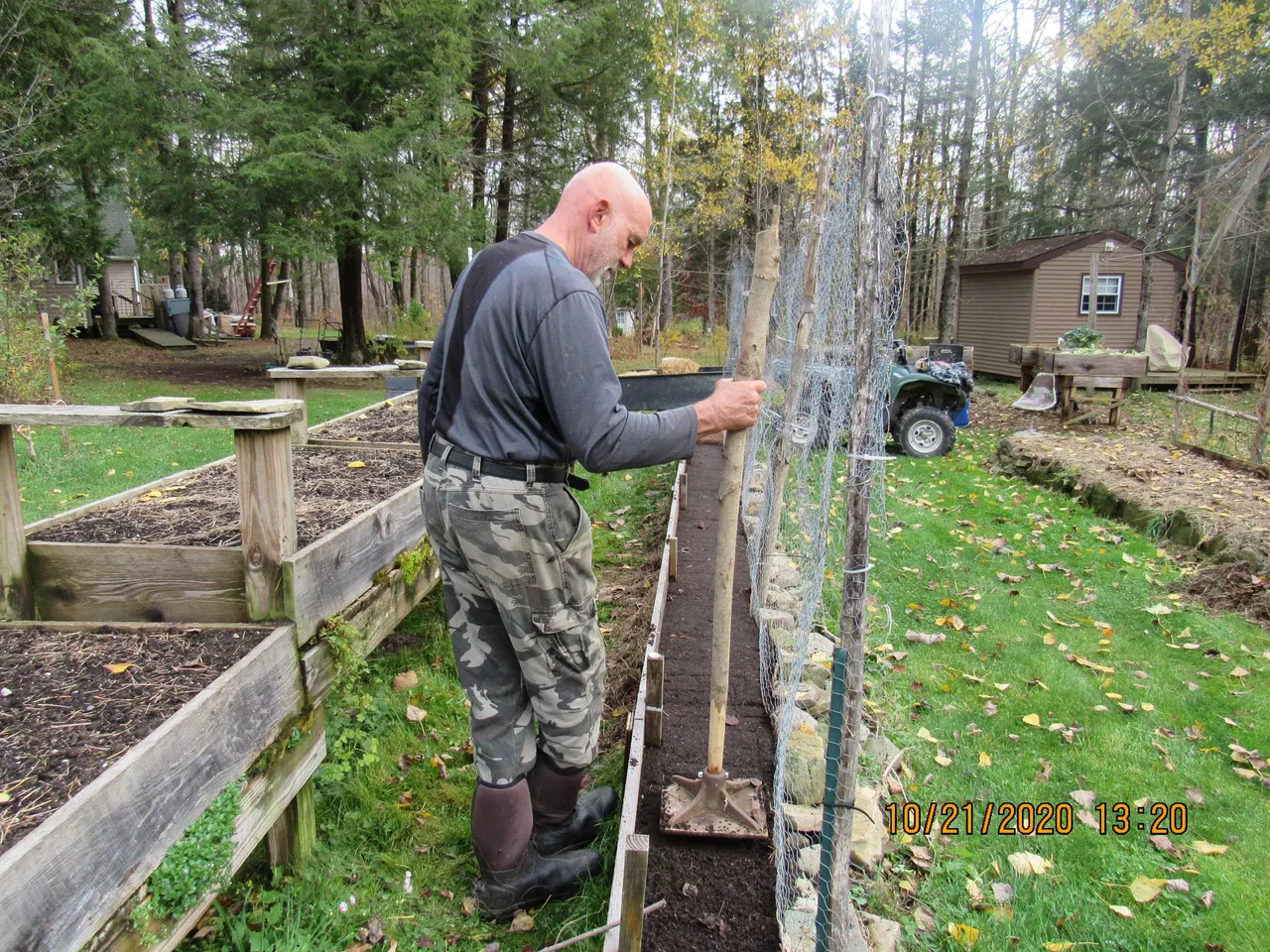
One of the best parts about gardening is that it's a hobby both @farm-mom and I totally enjoy. Hobbitizing together makes for a great day!
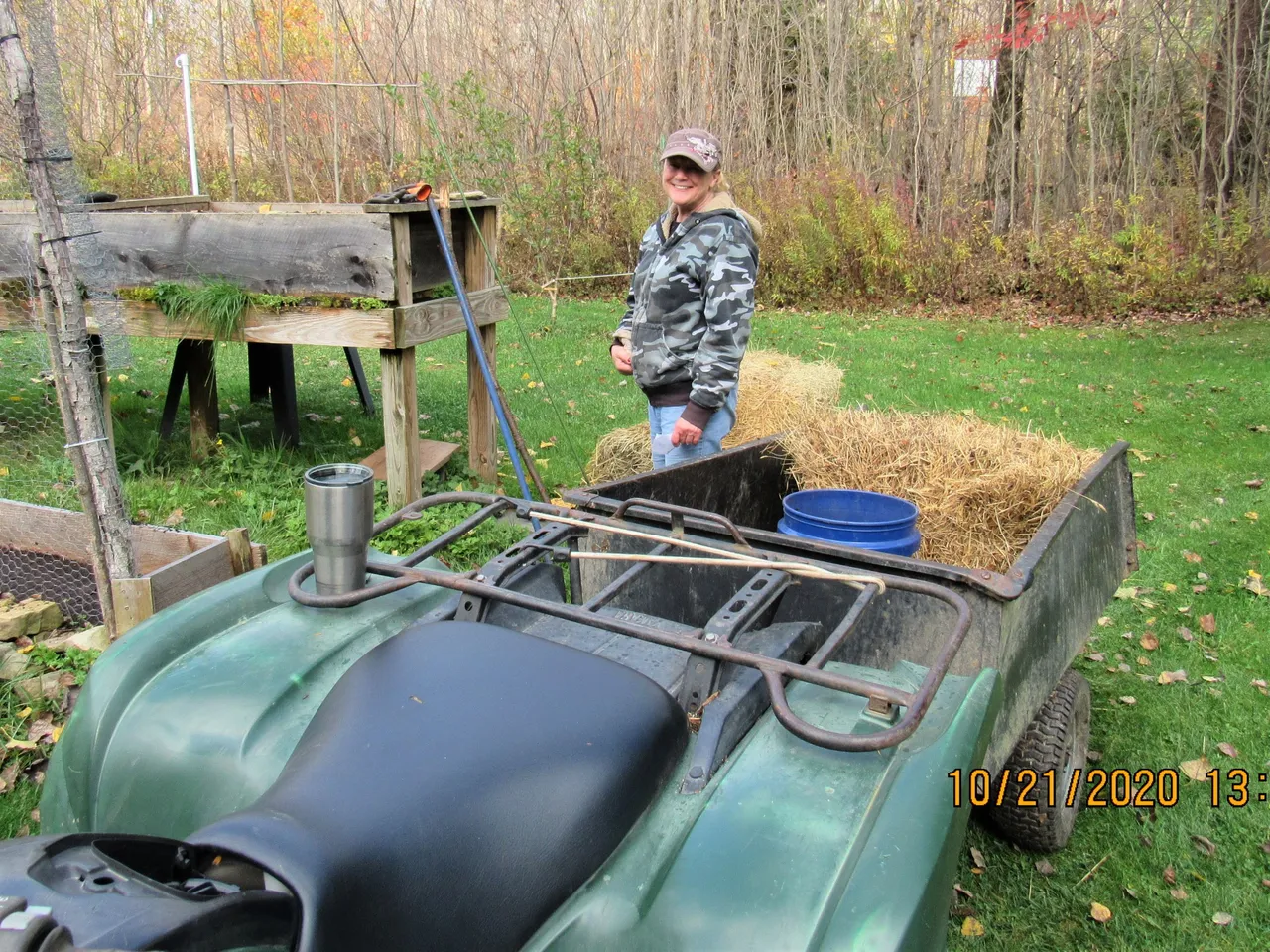
Knowing that a long and cold winter is commonplace in this neck of the woods, lots of hay was added, blanketing the cloves of garlic to keep them viable.
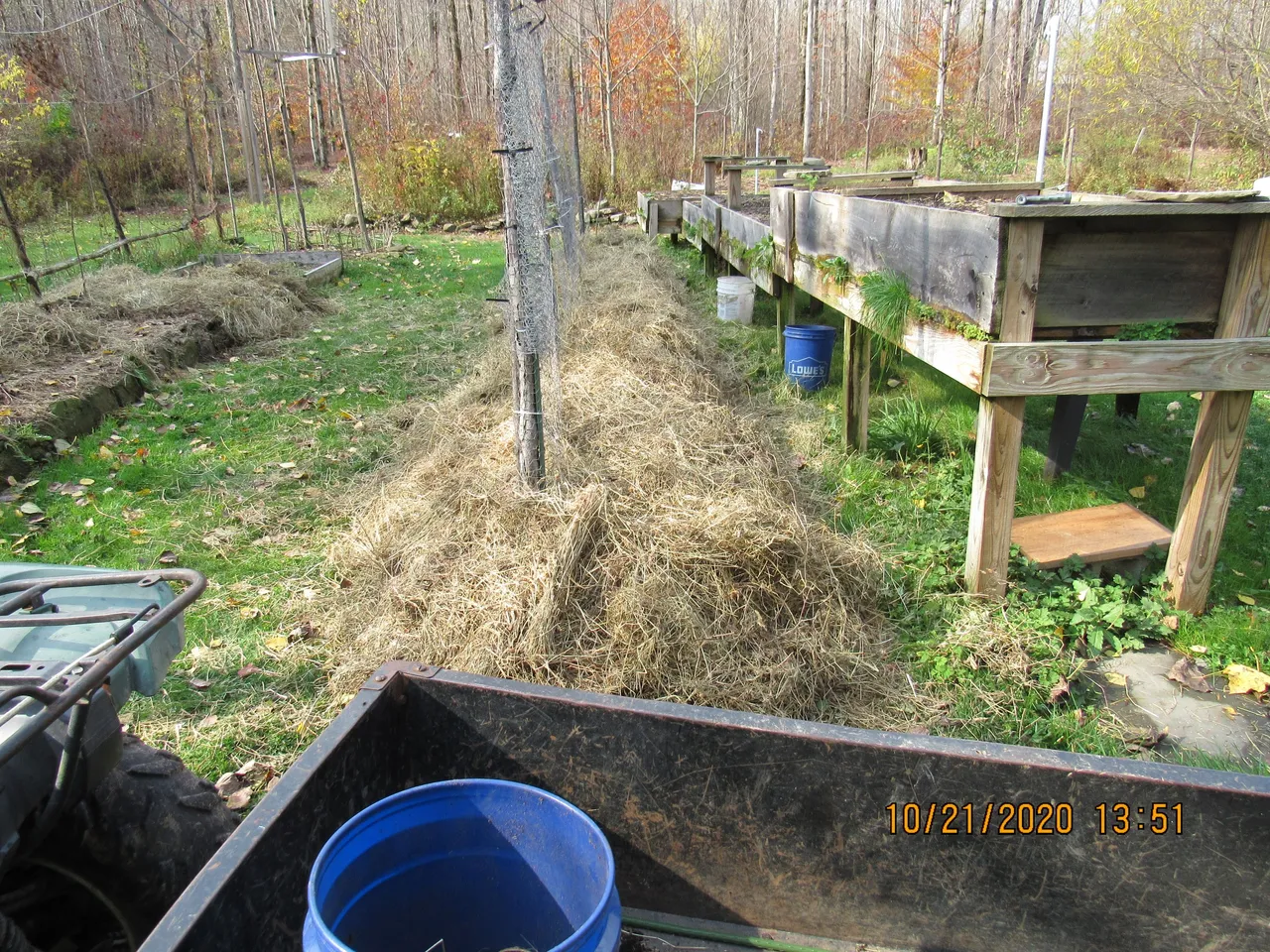
We planted twice as much garlic as was planted the year before. This year's Garlic Dill Pickles, quarts upon quarts of them, will have a few extra diced up cloves added to the recipe.
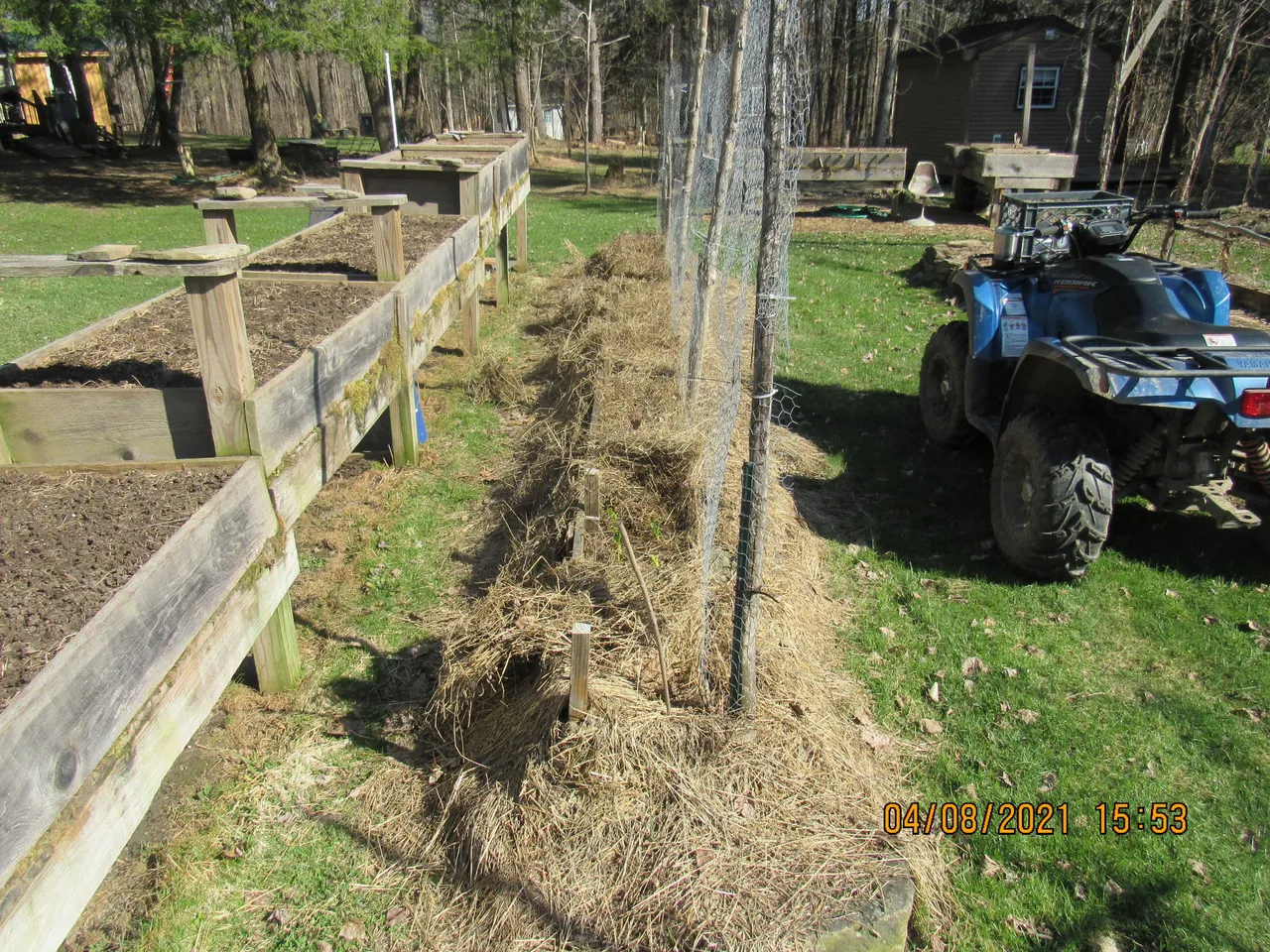
So now it's time to see how the garlic bed, where we grew peas last year, was doing.
At first sight, I could tell that all of the cloves we had planted were doing just fine.
